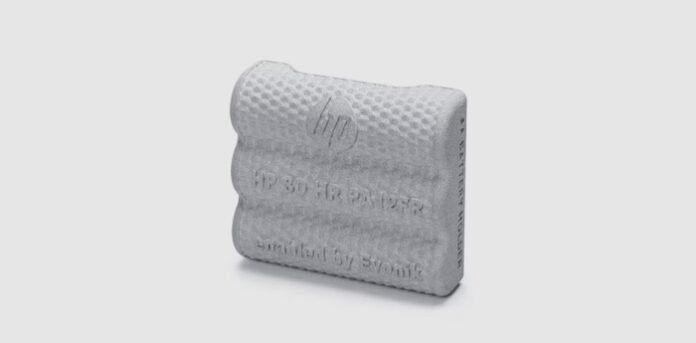
After four sessions explaining the fundamentals of HP’s Multi Jet Fusion (MJF) 3D printing technology, from workflow optimization and material science to production applications, the fifth session of HP’s Beyond the Layers webinar series shed light on various material innovations. This session focused on the expanding possibilities of polymer 3D printing through PA12 material variants, redefining scalability, surface finish, and mechanical performance in real-world production.
Following the previous session’s exploration of HP’s core PA12 polymer, this session discussed the extended PA12 family: PA12 Smooth, PA12 White, and PA12 Glass Beads.
At the beginning of the webinar, Jarrid Wittkopf from HP shed light on the ongoing shift from traditional manufacturing methods such as injection molding and CNC machining to additive manufacturing. According to him, the benefits are familiar yet continually expanding mass customization, design freedom, cost efficiency, and shorter lead times.
“MJF technology produces parts with isotropic mechanical properties, meaning strength and precision remain consistent regardless of orientation. This ensures repeatable, reliable results even in large production runs. When combined with HP’s emphasis on material reusability and sustainability, MJF emerges as a robust and eco-conscious alternative to conventional manufacturing, well-suited for sectors ranging from automotive and healthcare to consumer goods,” said Wittkopf.
HP’s PA12 portfolio
He said the main focus of HP’s polymer ecosystem is PA12, a high-performance nylon widely adopted for its mechanical strength, recyclability, and affordability. “PA12 has long been a favourite for functional prototypes and end-use parts, but different industries have different priorities; some need enhanced surface finish, others demand bright colors or higher rigidity.”
To address these needs, HP developed three specialized variants— PA12 Smooth, PA12 White, and PA12 Glass Beads, each customized to distinct applications and performance metrics.
PA12 Smooth- It was developed for customers seeking superior surface aesthetics directly off the printer. Offering a texture up to 70% smoother than standard PA12, it often eliminates the need for secondary finishing processes such assanding or vapor polishing. Beyond visual appeal, its higher refresh ratio enables greater powder reuse, translating to lower material waste and up to 25% cost reduction per part. This makes it particularly attractive for consumer products, dental molds, and industrial fixtures, where appearance and turnaround speed are critical.
In the webinar, he showcased practical examples, including Decathlon’s bike accessories and EV connector covers, both produced with PA12 Smooth for affordable customization and fast market delivery.
PA12 White- For applications where clean aesthetics and color flexibility are key, HP introduced PA12 White. By optimizing the fusing agents and powder composition, this variant achieves a bright white base that enhances dyeing potential and supports a wider color gamut.
This material is particularly relevant to medical, orthotic, and consumer design applications. Additionally, PA12 White offers superior UV stability, maintaining its brightness and mechanical integrity even after prolonged exposure to sunlight. “Designers in eyewear, fashion accessories, and automotive customization have also embraced this material for its blend of durability and visual flexibility.”
PA12 Glass Beads- This variant of PA12 addresses the need for stiffness, thermal resistance, and dimensional accuracy in industrial and automotive applications. By infusing the base polymer with fine glass beads, HP has created a composite that rivals metal in rigidity while remaining lightweight and easy to process. Wittkopf shared some examples of robotic end-of-arm tooling and laser cutting fixtures printed in PA12 Glass Beads. “The material’s high heat deflection temperature (HDT) and low warpage make it ideal for EV ducting, cooling manifolds, and sensor housings, where precision and thermal stability are critical.”
While standard PA12 remains the benchmark for overall strength, these variants empower engineers to fine-tune performance for specific use cases.
Concluding the session, Wittkopf emphasized that the combination of MJF technology and the PA12 material suite enables manufacturers to bridge the gap between prototyping and production. With material options now fine-tuned for strength, aesthetics, or efficiency, additive manufacturing is moving beyond experimentation into large-scale, production-ready reality.
“It’s not just about printing parts, it’s about finding the right material for your application,” Wittkopf noted.
















